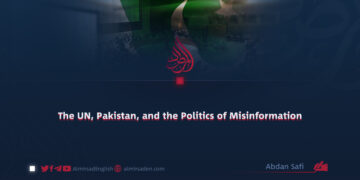Part 11
By Hijaz Tamim
Financing Through Credit Card Fraud
In recent years, terrorist organizations such as ISIS have moved beyond conventional financing methods, taking advantage of the often-hidden opportunities offered by cyberspace. One of the most lucrative and effective strategies they use is credit card fraud, which supports their operations, networks, and propaganda efforts.
This approach is cost-effective, efficient, and presents significant challenges for international security agencies. ISIS generally executes such schemes in multiple stages:
1. Acquiring Card Details: ISIS obtains card information through phishing, malware, or Dark Web purchases.
2. Exploiting the Data: Stolen information is used to buy goods, gift cards, or cryptocurrencies.
3. Laundering the Proceeds: Profits are concealed through informal networks, hawala systems, and intermediaries.
This process demonstrates that ISIS is not just a violent group but also financially motivated and technologically capable. Research in Europe, Turkey, and the Gulf region indicates that ISIS has generated tens of millions of euros through credit card fraud.
A Europol report published in 2015 revealed that a single ISIS-linked cell earned €3.5 million through this method. That network later became a major pillar of ISIS’s broader cyber-financing operations.
Advantages of Credit Card Fraud for ISIS
Credit card fraud offers ISIS distinct advantages:
– Anonymity: Transactions are difficult to trace.
– High Returns: Minimal investment can yield substantial profits.
– Global Reach: This method crosses borders easily, making containment challenging.
Because of these advantages, credit card fraud is a persistent threat to policymakers, security institutions, and financial watchdogs.
How ISIS Uses Credit Card Fraud
Credit card fraud has become one of the main cyber tactics ISIS employs to obtain financial resources. The group follows a three-step process: acquiring card data, exploiting it for financial gain, and concealing its identity. International reports indicate that ISIS has obtained millions of dollars through these schemes.
The primary methods include:
1. Phishing: Fake emails, SMS messages, or websites that mimic legitimate banks or service providers trick victims into entering their card details.
2. Malware and Keyloggers: Viruses and spyware record keystrokes on computers or phones. When users log into banking platforms, their credentials are captured and sent to ISIS operatives.
3. Purchasing Stolen Data: ISIS buys active card information from the Dark Web, often supplied by Russian, Asian, or European cybercriminals. Prices usually range from $5 to $50 per card.
In conclusion, credit card fraud illustrates the modern face of terrorism. It is sophisticated, rapidly evolving, and global in scope. Terrorist groups exploit vulnerabilities in the international banking system to fund their agendas. Addressing this threat requires coordinated efforts combining legal frameworks, advanced technology, and international collaboration to disrupt these networks.


















































